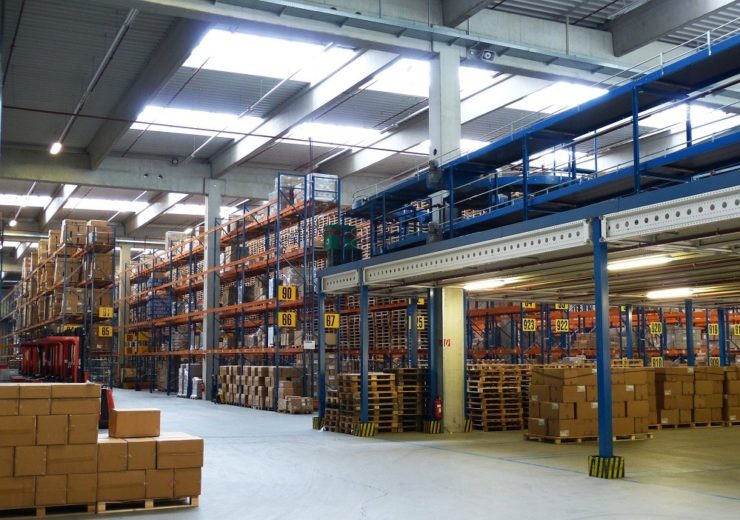Sander Defruyt says a move to the circular economy requires a "system-level change"

The Ellen MacArthur Foundation, through its New Plastics Economy initiative and lobbying efforts, the foundation has galvanised an industry to action (Credit: Pixabay)
One of the most well-known drivers of initiatives and action around marine litter and plastics waste is the Ellen MacArthur Foundation. Through its New Plastics Economy initiative and lobbying efforts, the foundation has galvanised an industry to action, with those pledging to join serving as a who’s who of the leading consumer packaged goods companies and manufacturers. To learn more about the foundation and its aims and hopes, Packaging and Converting Intelligence editor Matthew Rogerson speaks with Sander Defruyt, the Ellen MacArthur Foundation’s lead for the new plastics economy.
Ellen MacArthur Foundation’s Sander Defruyt on the new plastics economy
How does the Ellen MacArthur Foundation define sustainability?
At the Ellen MacArthur Foundation, we are committed to accelerating the transition to a circular economy. The circular economy is based on three principles — to design out waste and pollution, keep products and materials in use and regenerate natural systems.
Waste and pollution are largely results of the way we design products. If we shift our mindset to view waste as a design flaw and harness new materials and technologies, we can make sure waste and pollution are not created in the first place.
Today, most plastic packaging is used only once and then disposed of. It means 95% of the value of that plastic material, worth $80–120bn annually is lost to the economy. The circular economy allows us to capture that lost value.
Through the circular economy, we have the potential to build an economy that not only does less harm than our current take-make-waste linear economy, but actively improves our natural environment, while creating new opportunities for prosperity.
The Ellen MacArthur Foundation works with business, government and citizens to create a shared vision for the circular economy. Reinventing the system involves everyone.
Where do you think is the best place to start when trying to ‘solve’ sustainability?
A shift to a circular economy requires a system-level change. It requires unprecedented levels of commitment, collaboration and innovation from all actors in the economy.

Business plays a central role in creating the systemic change needed to reap the financial rewards of a transition. Governments and regulators create the enabling conditions for a circular economy and set direction through policy creation, while financial institutions drive innovation through investment.
Collaboration between suppliers, manufacturers, retailers, customers and infrastructure is the only way to build a circular economy with benefits throughout society.
Who is doing a good job with their sustainability efforts?
More than 400 organisations have united behind the New Plastics Economy Global Commitment to eliminate plastic waste at the source. These signatories include 200 businesses that collectively represent more than 20% of plastic packaging used globally.
They include Danone, H&M Group, L’Oréal, Mars, Incorporated, PepsiCo, The Coca-Cola Company and Unilever, as well as major packaging producers such as Amcor, plastics producers including Novamont and resource management specialist Veolia.
The Global Commitment has also seen 16 governments, including the French, British and Chilean national governments, 50 academics and universities, and leading institutions, such as WWF and the World Economic Forum, united behind the vision for a world without plastic waste. 26 financial institutions and six investors have also committed to investing $275m.
What are key messages from the Ellen MacArthur Foundation on sustainable packaging? Where have they been most successfully heard or adapted? Where is there more work to do?
At the heart of the Ellen MacArthur Foundation’s New Plastics Initiative is a vision for a world where plastic never becomes waste. Key to this is the elimination of problematic or unnecessary plastic packaging and a move to reuse models for packaging, rather than single-use plastic. All plastic packaging should be 100% reusable, recyclable or compostable and should be treated in this way in practice.
Those organisations behind the Global Commitment will work to eliminate plastics we don’t need, innovate so that plastics we do need are designed to be safely reused, recycled or composted, and circulate everything we use to keep it in the economy and out of the environment.

Plastic production should also be fully decoupled from the use of finite resources. This separation should happen first and foremost through reducing the use of virgin plastic. Using recycled content is essential, both to decouple from finite feedstocks and to stimulate demand for collection and recycling.
Any remaining virgin inputs should switch from finite resources over to renewables. These renewable feedstocks should be proven to be environmentally beneficial and come from responsibly managed sources.
Do you think technology or science can help get us to a sustainable future? What would that potentially look like?
Innovation is key in moving to a circular economy for plastics. To eliminate problematic plastic, new technologies and materials can be harnessed. Achieving 100% reusable, recyclable or compostable plastic packaging requires a combination of redesign and innovation in business models, materials, packaging design and reprocessing technologies.
The Ellen MacArthur Foundation, together with the Prince of Wales’s International Sustainability Unit, launched the $2m New Plastics Economy Innovation Prize in May 2017. The prize was funded by Wendy Schmidt, lead philanthropic partner of the New Plastics Economy initiative, and was awarded to innovators who are paving the way to a future without plastic waste.
Winners included VTT Technical Research Centre of Finland, which produced packaging that looks and feels like plastic but is made from wood; TrioCup, a disposable paper cup made with an origami-like technique that removes the need for a plastic lid; and Delta, which offers an edible and compostable seaweed-based alternative to non-recyclable plastic sachets for use in restaurants.
Is there something that regulators can do to move the process forward, or make it more efficient, or better in some way?
Governments and policymakers can create the enabling conditions for a circular economy, set direction, and drive innovation and investment. Government actions can include setting strategies to tackle plastic pollution, incentivising the use of alternative materials or banning problematic ones.
Governments at national, regional and city level have signed up to the New Plastics Economy Global Commitment. The UK Government is introducing a tax on plastic packaging that contains less than 30% recycled content from April 2022.

It is also invoking the ‘polluter pays’ principle through extending producer responsibility for packaging, meaning that producers will pay the full net costs of managing packaging waste at the end of life. In this way, the government will incentivise producers to design their packaging in such a way that makes it easier to recycle after use. A consultation is underway and a reformed system is expected to be operational in 2023.
The Government of Chile, like many other countries, has banned the use of plastic bags, and the Government of Grenada has implemented the Non-Biodegradable Waste Control Act, starting with the complete ban on the importation of polystyrene. The act also bars single-use plastics, such as shopping bags, cutlery, plates, straws and cups.
The City of Austin, Texas, offers a rebate for businesses to implement zero-waste practices, including replacing single-use disposable items with recyclable or reusable items. The city also promotes a marketplace for finding reuse opportunities for commercial plastic items, as well as a directory for encouraging donation and resale of reusable plastic items by residents and businesses.
What is your favourite sustainable innovation in packaging, and if different what is the latest innovation?
Reuse models can be an effective alternative to single-use plastic packaging that also bring significant benefits for customers and businesses. They combine innovative packaging and innovative business models.
The Ellen MacArthur Foundation’s recent publication ‘Reuse: Rethinking Packaging’ contains 69 case studies of businesses that are developing reuse packaging for business-to-consumer applications. While there are many reuse opportunities in business-to-business applications, these are generally better understood and adopted at scale already. Work needs to be done in the business-to-consumer market.
Examples include Loop, an online and physical store offering major brand products in superior reusable packaging with delivery and collection service; CoZie, a bulk-dispensing machine for cosmetic products, using reusable containers; and SodaStream, a home appliance that makes sparkling water, removing the need to buy it in plastic bottles.
Where do you see the industry going in the next 18–36 months?
To meet the ambitious targets of the Global Commitment, the 400 plus signatories will have to increase the pace and scale of their circular economy activity. To make the vision for a world without plastic waste a reality, all business and government signatories to the Global Commitment are committing to a set of ambitious 2025 targets.
Minimum levels of ambition are set for signatories and progress is reported annually to ensure transparency. Every 18–24 months, the minimum ambition levels will be reviewed and will become increasingly ambitious to ensure real progress is made to address global plastic pollution by 2025.

In the near future, the investment angle of the New Plastics Economy will become clearer. For example, together, the targets for the amount of recycled content in plastic packaging represent a demand of 5.4 million tonnes of recycled plastic by 2025. This provides a clear demand for investment in recycling infrastructure.
The Ellen MacArthur Foundation and UN Environment call on all businesses that make or use plastics, and all governments across the world, to sign up to the Global Commitment and join the signatories in a ‘race to the top’ to create a circular economy for plastic.
This article originally appeared in the autumn 2019 edition of Packaging & Converting Intelligence. The full issue can be viewed here.
